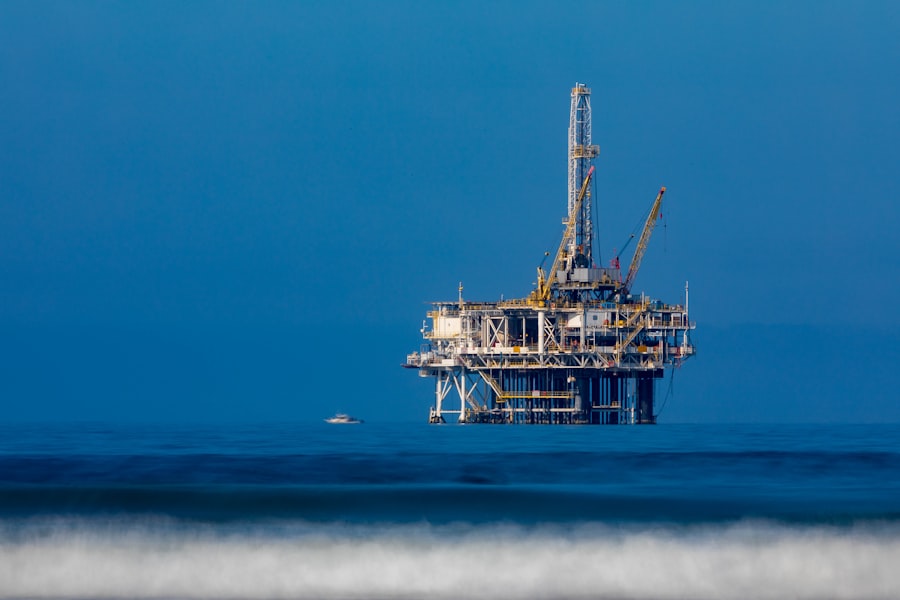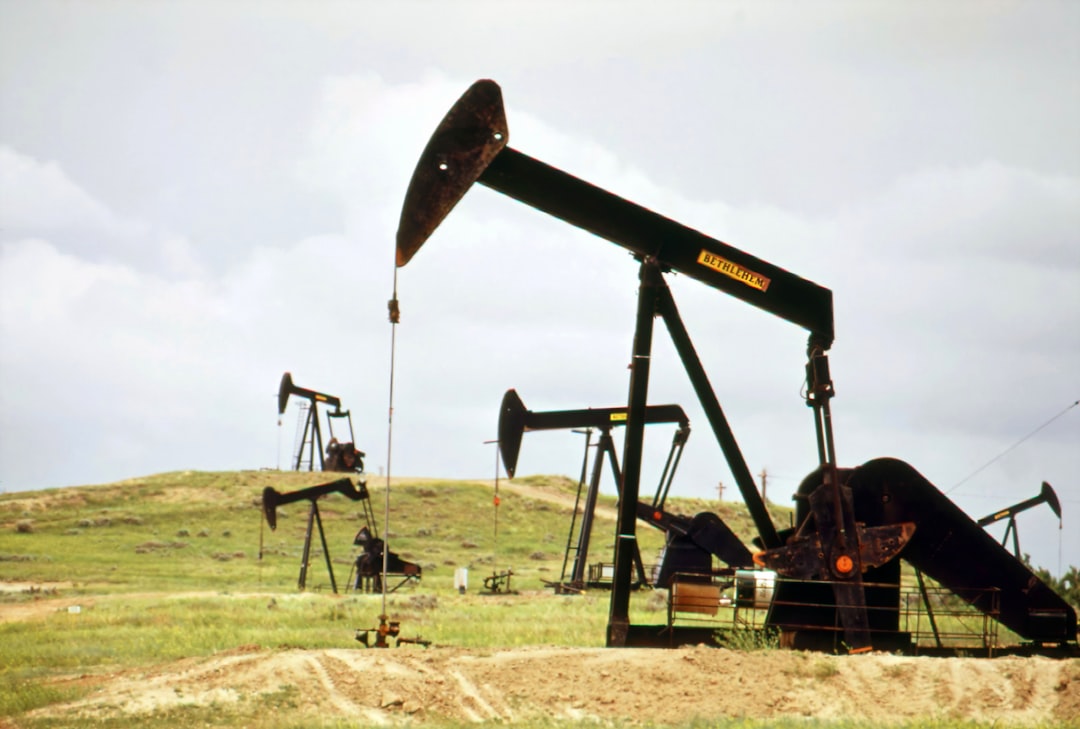The Drake Passage, a stretch of water that separates South America from Antarctica, is notorious for its treacherous conditions. This body of water is often characterized by tumultuous seas, unpredictable weather patterns, and strong currents, making it one of the most challenging maritime routes in the world. Sailors and navigators have long regarded the Drake Passage with a mix of awe and trepidation, as its reputation for fierce storms and high waves can turn a routine journey into a perilous adventure.
The passage is not only a critical route for maritime traffic but also a significant area for oil rig operations, which adds another layer of complexity to the already hazardous environment. Navigating through the Drake Passage requires not only skill but also an understanding of the unique challenges posed by its geography. The convergence of the Atlantic and Pacific Oceans creates a volatile mix of conditions that can change rapidly, often without warning.
For oil rig operators, this means that every journey through the passage is fraught with risk. The potential for equipment failure, accidents, and environmental disasters looms large, necessitating meticulous planning and preparation. As the demand for oil continues to rise, the Drake Passage remains a focal point for exploration and extraction, despite the inherent dangers that accompany such endeavors.
Key Takeaways
- The Drake Passage poses significant challenges for oil rig operations, including extreme weather conditions and rough seas.
- Oil rig operations in the Drake Passage carry inherent risks, including the potential for oil spills and environmental damage.
- Environmental concerns in the Drake Passage include the impact of oil rig operations on marine life and the delicate ecosystem of the region.
- Safety measures and regulations for oil rig operations in the Drake Passage are crucial for minimizing risks and ensuring the well-being of workers.
- Weather and climate conditions in the Drake Passage can have a significant impact on oil rig operations, requiring careful planning and preparedness.
Understanding the Risks of Oil Rig Operations in the Drake Passage
The risks associated with oil rig operations in the Drake Passage are multifaceted and complex. First and foremost, the extreme weather conditions pose a significant threat to both personnel and equipment. High winds, heavy seas, and sudden storms can disrupt operations and lead to catastrophic failures.
The isolation of the region further complicates matters; in the event of an emergency, help may be hours or even days away. This isolation can exacerbate the consequences of any incident, making it imperative for operators to have robust contingency plans in place. Moreover, the technical challenges of operating in such a harsh environment cannot be overstated.
The costs associated with these adaptations can be substantial, leading some companies to cut corners in safety measures. Additionally, human factors play a crucial role in risk management; fatigue, stress, and inadequate training can all contribute to accidents on oil rigs.
Understanding these risks is essential for ensuring the safety of workers and protecting the fragile marine ecosystem surrounding the Drake Passage.
Environmental Concerns in the Drake Passage

The environmental implications of oil rig operations in the Drake Passage are profound and far-reaching. This region is home to diverse marine life, including whales, seals, and various fish species that rely on its unique ecosystem for survival. The introduction of oil drilling activities poses a significant threat to these species, as spills and leaks can have devastating effects on marine habitats.
The potential for contamination extends beyond immediate spills; even minor operational discharges can disrupt local ecosystems and lead to long-term ecological damage. Furthermore, the Drake Passage plays a crucial role in global climate regulation. The waters here are integral to ocean currents that influence weather patterns worldwide.
Disrupting this delicate balance through oil extraction could have unforeseen consequences not only for local wildlife but also for global climate systems. Environmentalists argue that the risks associated with oil drilling far outweigh any potential economic benefits, urging policymakers to consider alternative energy sources that would mitigate these risks while preserving the integrity of this vital marine environment.
Safety Measures and Regulations for Oil Rig Operations in the Drake Passage
| Safety Measure/Regulation | Description |
|---|---|
| Emergency Response Plan | A detailed plan outlining procedures for responding to emergencies such as oil spills, fires, and medical emergencies. |
| Regular Safety Inspections | Frequent inspections of equipment, facilities, and operations to ensure compliance with safety regulations and identify potential hazards. |
| Training and Certification | Mandatory training for all personnel on safety procedures, equipment operation, and emergency response, along with certification requirements. |
| Environmental Impact Assessments | Evaluations of potential environmental impacts of oil rig operations, with measures in place to minimize and mitigate any negative effects. |
| Regulatory Compliance | Adherence to local and international regulations governing oil rig operations, including safety standards, environmental protection, and labor laws. |
In light of the numerous risks associated with oil rig operations in the Drake Passage, stringent safety measures and regulations are essential. Regulatory bodies have established guidelines aimed at minimizing environmental impact and ensuring worker safety. These regulations often require comprehensive risk assessments before any drilling activity can commence.
Operators must demonstrate their ability to respond effectively to emergencies and implement measures to prevent spills and accidents. Additionally, regular inspections and audits are mandated to ensure compliance with safety standards. These inspections assess everything from equipment integrity to emergency response readiness.
Companies operating in this challenging environment are also encouraged to adopt best practices from other industries that have successfully navigated similar risks. By fostering a culture of safety and accountability, operators can significantly reduce the likelihood of incidents occurring in this perilous region.
The Impact of Weather and Climate on Oil Rig Operations in the Drake Passage
Weather conditions in the Drake Passage are notoriously unpredictable, which poses significant challenges for oil rig operations. The region is subject to rapid changes in weather patterns, with storms capable of developing with little warning. These sudden shifts can disrupt drilling activities and pose serious risks to personnel on board.
Operators must remain vigilant and adaptable, constantly monitoring weather forecasts and adjusting their plans accordingly.
As global temperatures rise, the frequency and intensity of storms may increase, leading to even more hazardous conditions for oil rigs operating in the Drake Passage.
This evolving landscape necessitates ongoing research and adaptation by operators to ensure that they can effectively manage these new challenges while maintaining safety standards.
Emergency Response and Evacuation Plans for Oil Rigs in the Drake Passage

Given the inherent risks associated with oil rig operations in the Drake Passage, comprehensive emergency response and evacuation plans are critical components of operational safety. These plans must account for various scenarios, including equipment failure, medical emergencies, and environmental incidents such as oil spills. Operators are required to conduct regular drills to ensure that all personnel are familiar with emergency procedures and can respond swiftly in a crisis.
In addition to internal preparedness, collaboration with local authorities and maritime rescue organizations is essential for effective emergency response. Establishing clear communication channels and protocols can significantly enhance response times during emergencies. Furthermore, investment in advanced technology—such as satellite tracking systems—can aid in monitoring conditions and coordinating rescue efforts when needed.
The Role of Technology in Mitigating Risks for Oil Rig Operations in the Drake Passage
Technology plays a pivotal role in enhancing safety and efficiency for oil rig operations in the Drake Passage. Advanced monitoring systems allow operators to track weather conditions in real-time, providing critical data that can inform decision-making processes. Predictive analytics can help anticipate potential hazards based on historical data, enabling companies to take proactive measures before issues arise.
Moreover, innovations in drilling technology have improved safety standards significantly. Automated systems reduce human error by taking over critical functions during high-risk operations. Remote-operated vehicles (ROVs) are increasingly used for underwater inspections, allowing operators to assess equipment integrity without putting personnel at risk.
By leveraging these technological advancements, companies can mitigate risks associated with oil rig operations while enhancing overall operational efficiency.
The Importance of Training and Preparedness for Oil Rig Workers in the Drake Passage
Training and preparedness are paramount for ensuring worker safety on oil rigs operating in the Drake Passage. Given the unique challenges posed by this environment, comprehensive training programs must be tailored specifically to address these risks. Workers should receive instruction not only on operational procedures but also on emergency response protocols tailored to potential scenarios they may encounter.
Regular drills and simulations are essential components of effective training programs. These exercises help workers develop familiarity with emergency procedures while building confidence in their ability to respond under pressure. Additionally, fostering a culture of safety within the workplace encourages open communication about potential hazards and empowers workers to voice concerns regarding safety practices.
Case Studies of Oil Rig Incidents in the Drake Passage
Examining past incidents involving oil rigs in the Drake Passage provides valuable insights into the risks associated with operations in this challenging environment. One notable case involved a major spill resulting from equipment failure during a storm, which had devastating effects on local marine life and prompted widespread public outcry. Investigations revealed lapses in safety protocols and inadequate emergency response measures that contributed to the incident’s severity.
Another case study highlighted a successful evacuation operation following an onboard fire during adverse weather conditions. The swift actions taken by crew members—coupled with effective communication with rescue services—demonstrated the importance of preparedness and training in mitigating potential disasters. These case studies underscore the need for continuous improvement in safety practices within the industry while emphasizing lessons learned from past experiences.
Balancing Economic Benefits with Environmental and Safety Concerns in the Drake Passage
The debate surrounding oil rig operations in the Drake Passage often centers on balancing economic benefits with environmental protection and safety concerns. Proponents argue that tapping into this resource-rich area can provide significant economic advantages, including job creation and energy security. However, opponents highlight the potential environmental consequences that could arise from drilling activities, urging policymakers to prioritize sustainability over short-term gains.
Finding common ground between these competing interests requires thoughtful dialogue among stakeholders—including government agencies, environmental organizations, industry representatives, and local communities. Collaborative efforts can lead to innovative solutions that address both economic needs and environmental stewardship while ensuring worker safety remains paramount.
The Future of Oil Rig Operations in the Drake Passage
As global energy demands continue to evolve alongside growing concerns about climate change, the future of oil rig operations in the Drake Passage remains uncertain. While some companies may seek to expand their activities in this region due to its untapped resources, increasing regulatory scrutiny and public opposition may hinder such efforts. The industry faces mounting pressure to adopt more sustainable practices while exploring alternative energy sources that align with global climate goals.
Ultimately, navigating this complex landscape will require a commitment from all stakeholders involved—balancing economic interests with environmental responsibility while prioritizing worker safety above all else. As technology advances and awareness of environmental issues grows, it is likely that future operations will need to adapt accordingly if they are to thrive within this challenging yet vital maritime corridor.
The Drake Passage, a crucial maritime route connecting the Atlantic and Pacific Oceans, has recently become a focal point for discussions on oil exploration and environmental conservation. An article on MyGeoQuest delves into the complexities surrounding the potential establishment of an oil rig in this ecologically sensitive area. The piece explores the geopolitical implications, the technological challenges of operating in such a harsh environment, and the environmental concerns raised by conservationists. As nations weigh the economic benefits against the ecological risks, the debate continues to evolve, highlighting the need for sustainable practices in resource extraction.
WATCH NOW! Drake Passage: Earth’s Deadliest Waters Revealed
FAQs
What is the Drake Passage?
The Drake Passage is the body of water between the southern tip of South America and the northern tip of the Antarctic Peninsula. It is known for its rough seas and strong winds, making it one of the most challenging maritime routes in the world.
What is an oil rig?
An oil rig is a large structure used for drilling and extracting oil and natural gas from beneath the earth’s surface. It is typically located in offshore areas such as oceans or seas.
Is there an oil rig in the Drake Passage?
As of now, there are no operational oil rigs in the Drake Passage. The harsh weather conditions and remote location make it a challenging and risky area for oil drilling.
What are the environmental concerns of having an oil rig in the Drake Passage?
The Drake Passage is home to diverse and fragile marine ecosystems, including a variety of marine mammals, seabirds, and fish. The presence of an oil rig in this area could pose significant environmental risks, including oil spills and disruption of marine life.
Are there any regulations or restrictions on oil drilling in the Drake Passage?
The Antarctic Treaty System, which includes the Protocol on Environmental Protection to the Antarctic Treaty, prohibits all activities related to mineral resource exploration and exploitation in Antarctica, including the waters of the Drake Passage. This effectively bans oil drilling in the region.
